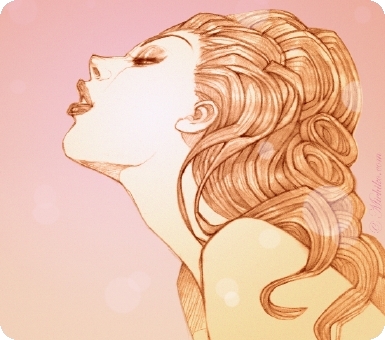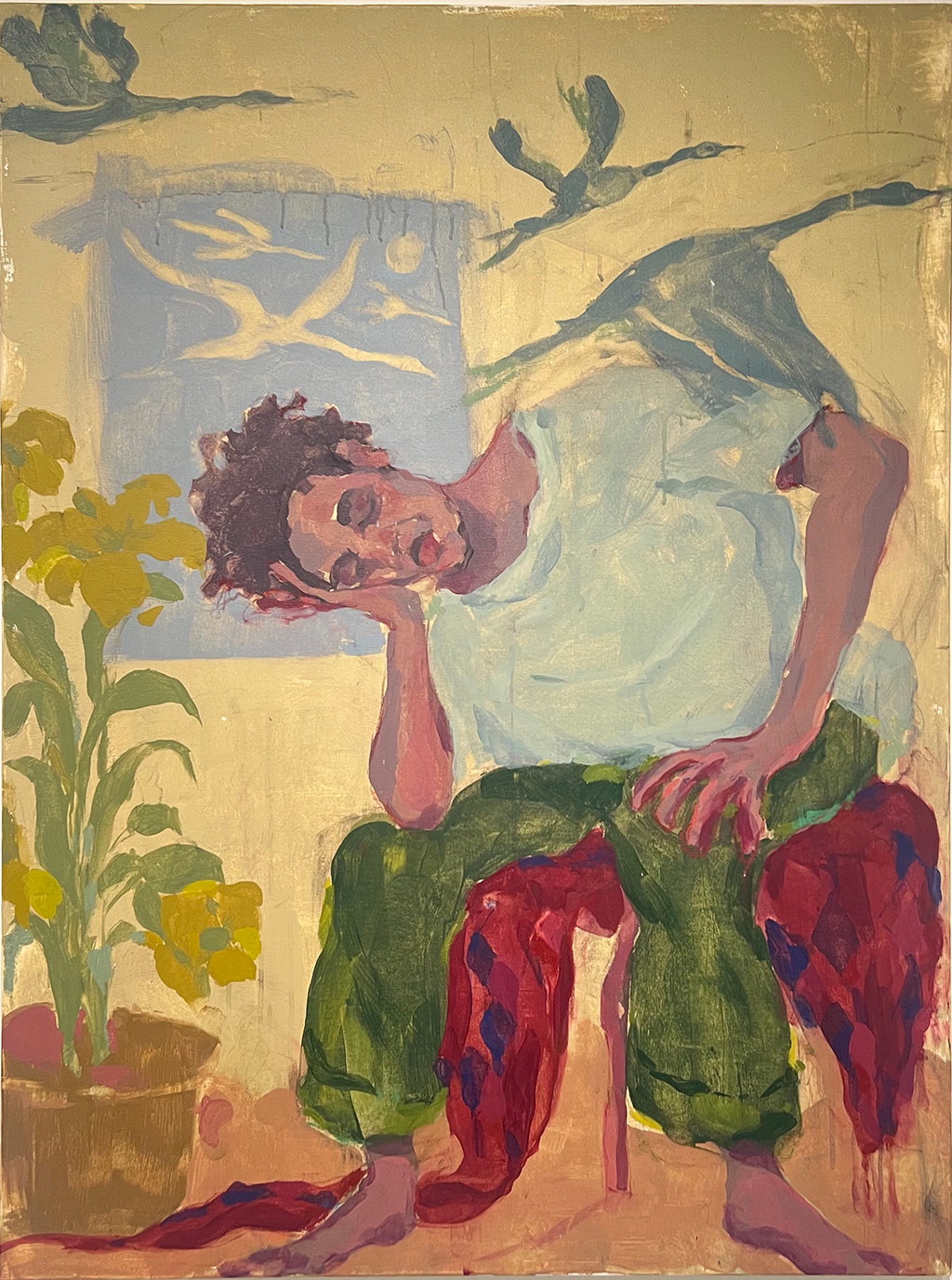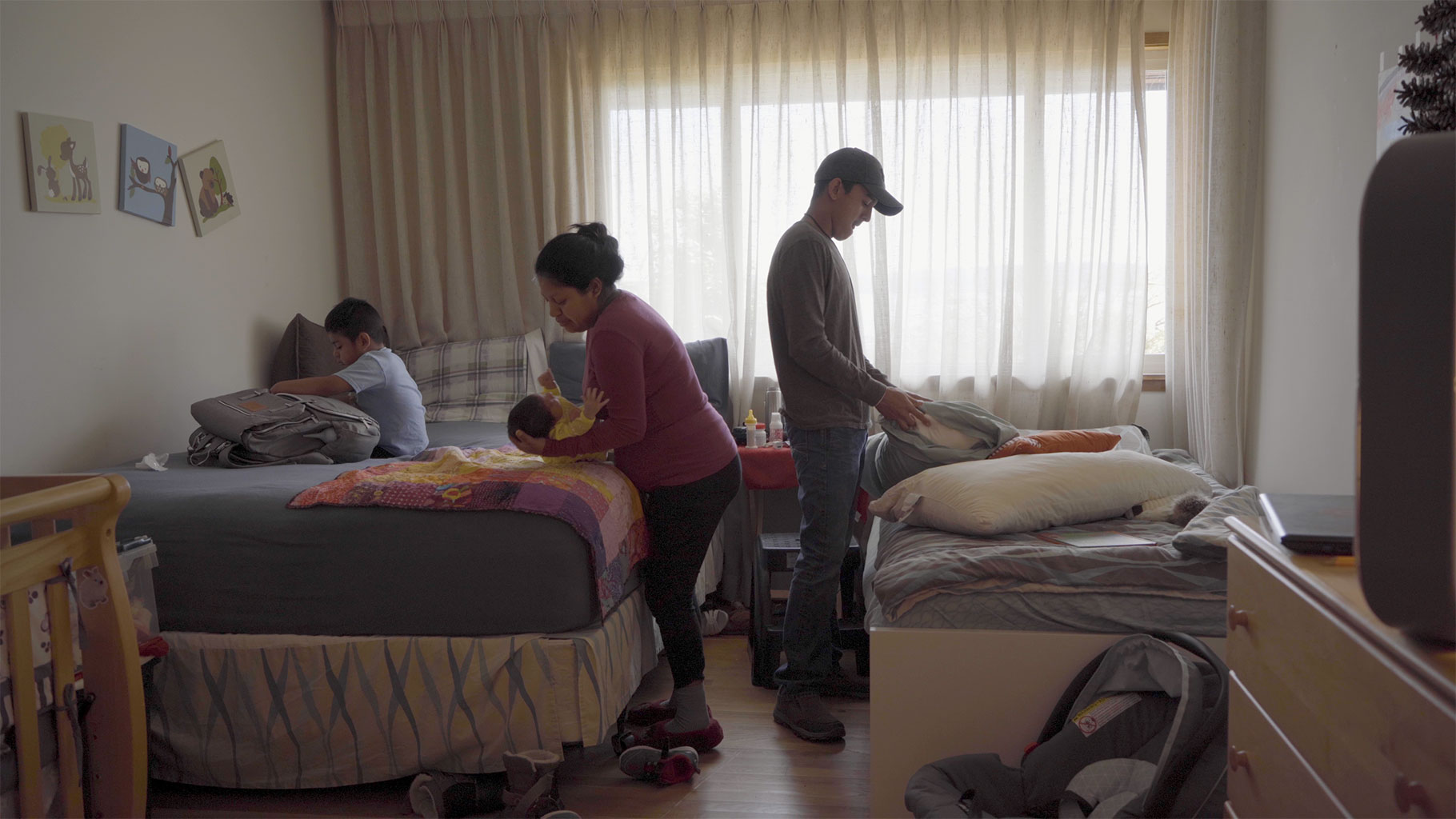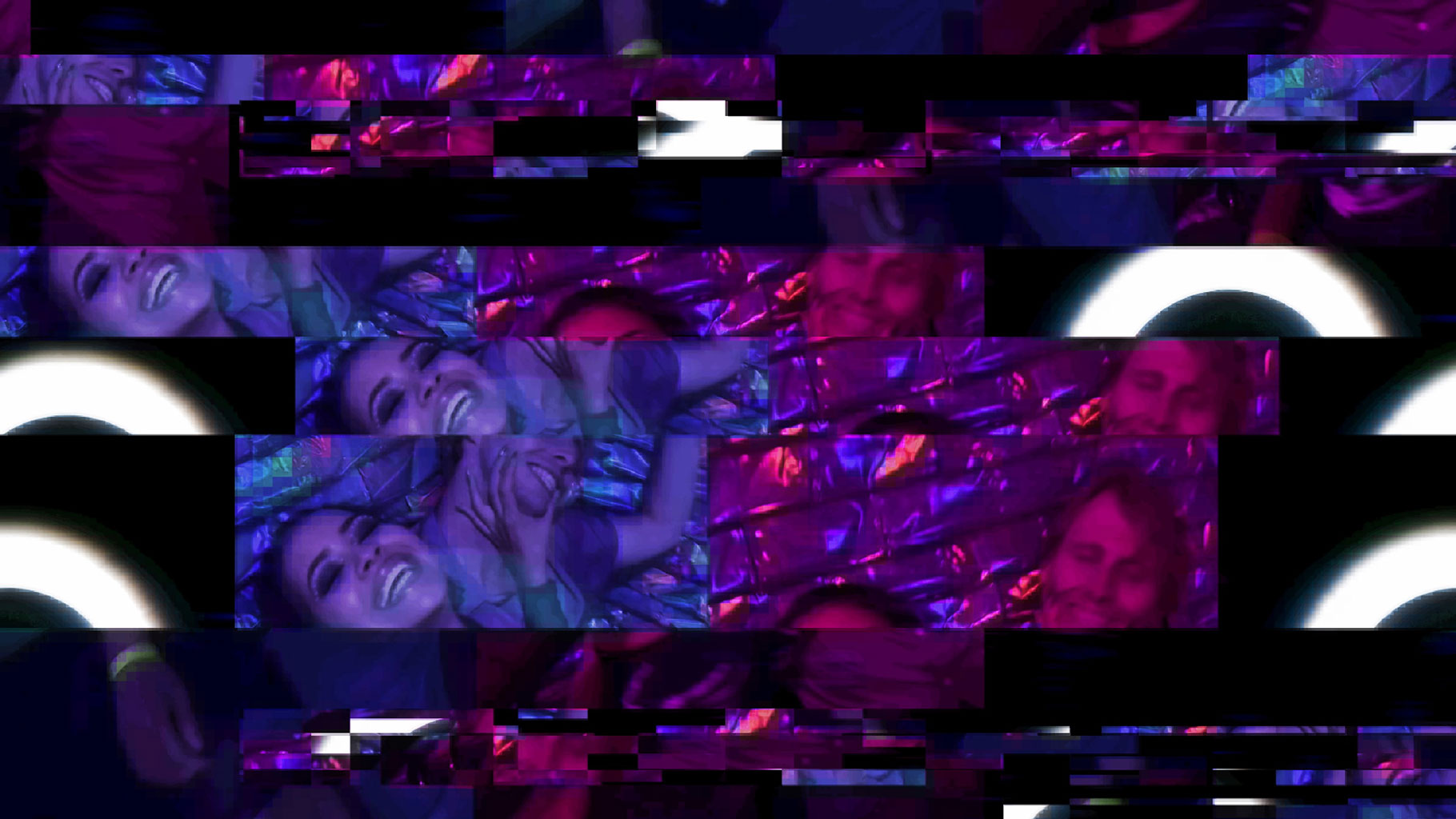Since your name is so…
Gnarly?
So gnarly, what is your background?
Well my Mom’s from Taiwan and my Dad’s from Switzerland, and I think they were traveling in Japan just before I was born. Michiko’s the name of the Empress there, and since none of the American baby names were doing it for them, I guess they decided to go for it. I have two brothers and a sister with crazy hybrid names too, and we all learned to be pretty good spellers early on!
What kind of art do you do?
Mostly I like sketching with pencil or whatever’s handy and stylizing the shapes and perspective to keep it interesting. I also really like using the simplest tools available, which in my case is really just using a #2 pencil and tracing paper. It’s super cheap, and I like that I can be more spontaneous and experimental with the whole thing, as opposed to feeling too precious and anal-retentive with it, like back in art school where they made us buy hundreds of dollars in oil paints and archival papers and we didn’t even know what the heck we were supposed to be making yet. I take my sketches and scan it in on my little 1″ thick $60 Canon scanner which is small enough to fit in my backpack (I love that!), and then I color it in Photoshop. I love that I can output that onto high resolution gallery prints or create entire products and books or whatever and the idea that you can travel light and work from pretty much anywhere still cracks me up. In the old days I had to drag portfolios of slides from one design firm to another in NY. I still get all happy whenever I’m able to catch a friend’s wireless signal these days.
 How did you first get started?
How did you first get started?
I think it first started in fourth grade I got into drawing unicorns, and then everyone wanted me to draw them unicorns. My teacher had me draw the Pink Panther for the classroom wall, and when I think about that now, that was probably a trademark or copyright infringement, but I don’t think anyone will go back in time to sue me heh! For awhile I thought I was too cool to take art classes, until about 10th grade, and then I took my first fashion illustration class and I was like, “Whoa, I can either do this on my own and take forever, or I can actually learn more quickly and give up having an ego.” After high school, I went to Art Center in Pasadena, and I think I was halfway through before I realized, “Oh! You can make a living at this!” At first I think I was just really young and just wanted to learn to draw better. Halfway through, I’m like, “Oh, so this is how you can make a living without having to get a day job!”
What was your first commercial job?
I did something for Pasadena’s local newspaper, the Star-News an article debating the merits of creationism vs. evolution. I just came up with a drawing of Adam this guy with a big ol; fig leaf on and a monkey which represented evolution, and they were arm-wrestling. And they printed it, and I was like, “Yeah! Fifty bucks!”
How did you get connected with clients like MTV and Coca-Cola?
I started doing this for a living in 1992, just before I graduated from art school. After I got out, I was too poor to have postcards printed, so I mailed photo prints with my phone number to my “wish list” of people I dreamed of working with. I sent that out and got some exciting responses and developed more work from that. A few years later I was working on a book project late one night for Disney’s book publisher, and I’d picked up one of those free postcards they have in racks all over town. I was taking a break from drawing and wanted to call the number on the back to leave a message after hours, but it turns out the owner was working late that night on some kind of book too so we joked about that. We were having this great talk at like 3am, and he said, “I’d like you to come by tomorrow and meet with our art director and see about us putting your stuff on our cards.” This was a barter deal and I was thrilled because there’s no way I could have afforded their advertising rates. Those came out in 1995, and at first they said they were just going to put them on local racks in the empty spaces when they ran out of paid ads, but they ended up printing millions of them and putting them out in all the major cities with my contact info on them, and the owner later called me from the road to tell me my cards were the most popular in the history of their company. I said, “Well what do you expect? They’re free,” but he said it was a pretty big deal people don’t take stuff they don’t want, even if it’s free. We started getting offers to have stuff in Darren Star TV shows and stuff (the guy who later created “Sex & the City”) and these things started showing up everywhere, creating all these coincidences in my life. I think the postcards are probably how my number later ended up getting into the hands of MTV and Coca-Cola and clients like that, and the word of mouth from people collecting them for whatever reason. I still get emails for people all over the world off of these cards every few days, and that was like 10 years ago (!) and my number and email have changed a bunch of times so it’s great that they like the stuff enough to try and find me.
You definitely lucked out there.
Yeah! and all because I made that random late-night phone call, instead of waiting till morning like a normal person 🙂
What advice would you give for artists who are just starting out?
This is going to sound kind of cheesy but the business part of art is my favorite part! Making new art is great, but licensing my existing library of images, renting them out to different types of clients the whole multiple streams of income thing is great too. Writing up good legal contracts and working out how to structure the deal so that everyone wins, and knowing that there’s some interesting project proposal right around the bend I love that. But it seems like a lot of artists think that business is somehow bad, or that it’s somehow insulting to ask for a contract detailing the work arrangement, but to me, you start off learning your craft and enjoying the creative stuff first, but you’re in a bit of a dreamland finding your voice and your look to your work. Once you’re through with this part, the next step is going to be, “How do I negotiate for this and make a good living?” Whether it’s pricing, or artwork you’d choose to do for this audience or a product that you believe in, taking charge of the messages you’re helping to create. By “business,” I mean that you protect the value of your intellectual property and make sure that it’s copyright registered (check out copyright.gov, where it’s only $30 to protect your copyrights). I don’t mean just mailing it to yourself in an envelope, which is a common misconception and doesn’t hold up in court, unfortunately. The fun part is asking for what you think it’s really worth, and then finding out that other people actually agree with you. That’s the thing I like the most structuring something that normally wouldn’t have very much structure to it, carving something out of nothing, and making it better as a template for the next artist to use. I think a lot of artists I’ve met feel weird about the business and money aspects of things, maybe because we all have this ongoing fantasy that our art is so amazing that it’s supposed to sell itself effortlessly without any marketing effort from us, and that that’s proof of how great it is. But to totally simplify it I think we all want to be rewarded and validated for our work and our talents, and there are many different ways to do it. Maybe we start out with some guilt about getting money for art, for something that sometimes looks like a hobby, maybe it feels a bit like vanity. We don’t want to be greedy this is supposed to be a labor of love, passion, after all! But we’re creating content and culture potentially for the long-term, and protecting the value of this is important, perpetuating it, so that we can keep creating it and building and contributing more ideas while being supported along the way. It’s nice to be rewarded on merit alone, but it also means fighting for that reward sometimes. When you stand up and say to a client or a collector, “I think it’s valuable for this reason,” and you see that the client actually agrees with you, then this gives you the energy and belief to go on and create the next great piece.
What kind of projects are you working on of your own right now?
I’m working with Art Patch on a postcard book at the moment, which’ll be ten different characters from the BimBionic® (Perfect Girls for an Imperfect World) series to start off with. We’ll be doing a signed limited edition of 500 postcard books in the beginning, and hoping to have them in all our favorite little stores around Seattle and San Francisco in the next month or so.
Can you tell me about your Ex-Boyfriend Dolls®?
Heh! Originally I was going to do these one-of-a-kind dolls, and I thought it would be funny to make doll portraits of some of the characters which my friends and I have dated. People always ask me if they’ll have pins in them, but I actually don’t hate ’em. I love those dudes! and they’ve been huge influences in my life. So originally the dolls were based off of real people, but as I talked to more and more people I found that there were some pretty funny things that a lot of people’s exes have had in common, and I thought it’d be fun to caricature the different types in a new format, through sewing them instead. It was fun getting everything trademarked and copyright protected, and learning to pitch ideas to toy companies and potential investors too I’m still learning a lot. Working with the idea has springboarded other projects now too beyond dolls, which is fun since they wouldn’t have happened otherwise, and now we’re working on the Ex-Girlfriend spoofs too just to be fair! 🙂
Camel cigarettes used your artwork without your permission. How did you find out?
I got this email from a guy in Denver which was like, “Congratulations, I saw your cigarette ad.” I thought it might be a fluke, because people get styles confused sometimes, but then someone else sent an e-mail from SF, and then my sister told me she’d seen it in the LAWeekly. I asked her to scan it for me so I could see what she was talking about, because cigarette companies are usually pretty careful about getting permission to use artwork because a lot of artists are against having their work used that way. She sent it over, and I couldn’t believe it – yup, it was mine, and they had their Camel logo stuck right on it! Years before, someone working for Virginia Slims asked me to do some work for their campaign since they were doing the whole “You’ve come a long way, baby” stuff trying to attract women. I guess my BimBionic characters would have been perfect for their intended audience at the time, but I said, “Thanks a lot, but no.” At that point, I knew I’d potentially turned down a whole heck of a lot of money, but I knew where I stood on that. That’s why it was so disturbing to have a different cigarette company just steal it and run it in national ads, and then pretend that they didn’t do anything wrong. They claimed they Œdidn’t know’ the artwork belonged to me, even though ad agencies are required to get permission in writing. Later, we found out that they scanned a promo postcard with my name, my website to contact me for permission, and even my copyright line on it, and they just scanned it and erased it out.
What do you think they were thinking? They obviously have a ton of money and could have hired someone else to draw something.
I know! The fact that they didn’t ask was really weird, and that they erased my name off of it is just — what the heck! I called the ad agency in Chicago and spoke with the guy who was in charge of everything. He wouldn’t even apologize. I tried to work it out with him, asking him how we could make it right, and he was extremely disrespectful. I don’t know if it’s an act they put on to scare artists away, but I just got the sense that that was their whole attitude about things. The tobacco industry spends millions of dollars every day on advertising it’s not like they didn’t have the resources to do the right thing. I would have said no, but they could have easily hired somebody else.
Do you know if they have done similar things to other artists?
I think for their Salem cigarettes, they just got busted for copying a photographer’s work for their ads. He sued them and I think he got a
settlement, but part of each settlement deal seems to be that they admit to no wrongdoing. Then last October they got busted again for their Kool Mixx campaign targeting hiphop kids. It just keeps happening. Part of what bothered me is how they used my stuff to target teens through free alternative newspapers, because a lot of my audience is made up of teens and kids. At that point, I’d been doing a lot of work for teen-based companies like MTV and Playstation, and that’s what disturbed me most, because cigarette companies are not supposed to be targeting kids under 18 and in this case, Camel had already been busted for using their Joe Camel cartoon character by the government. There’s a whole thing called a Master Settlement Agreement; they’re not supposed to use cartoon characters anymore, and then of course they used my character within a few months of that without asking. They keep getting caught targeting teens, and they keep pretending like they’re not doing it. I got a chance to see some of their corporate documents, and how they target what they call Œhipsters’ and Œtrend-setters’ and how they’re studying ways to insinuate themselves into these environments. There’s a website now that shows their confidential documents made public after lawsuits, how their adult consumers are dying out and how they need to attract kids in the 15-18 years range since that’s an age their studies show where most people get addicted to nicotine. It shows their marketing plans to pay off bartenders and bar owners to let them conduct their research at nightclub and arts venues, collecting names and mailing addresses and basically controlling it through event sponsorships so that no one smokes anything but their own brand in that space. If they can’t use typical advertising, they’re doing other stuff through events and attempting to buy off people’s behavior, I guess making people their new billboards in a way. I know it sounds kinda sci-fi and creepy, but those
documents are right from their company files.
I read that you were being threatened with bankruptcy by the cigarette company’s lawyers?
Yeah. Eek. There’s this thing that happens in court cases a lot, called an “Offer of Judgment.” They basically said, “We’re offering you this settlement amount. If you turn it down, you go before a jury, and even if you win, if the jury gives you even a penny less than what we originally offered you, you have to pay all of our legal bills.” Like Camel and R. J. Reynolds would need an artist to cover their bills, you know? And for some reason it’s legal for them to do that. The way people are supposed to get around it is through incorporating their businesses first, or creating a limited liability situation, and figuring out other ways to protect your assets before bringing a case. I don’t have much that you could call assets just an old Honda, really! but I’ve worked hard to keep up my credit score and it would be ridiculous to wipe that out while trying to defend my rights when someone else stole something from me… I guess my lawyer might’ve blown it on that one with giving the wrong advice, uhmmm…but I’m glad I’ve learned so much about how the system works. I got into the court thing to go in front of a jury to let them know that these guys are working to target kids, even stealing artwork to do this. Sure, it bothers me that I didn’t get a chance to do that. And they actually had the nerve to offer an uneven dollar amount (adding another dollar and another penny to it), because juries generally offer amounts in round numbers. If the jury said they were going to give me for example ten bucks, Camel would say that they’d offer me eleven dollars and a penny. The jury wouldn’t know, and they’d think they were doing a good thing by saying, “We’ll award you ten bucks,” and Camel would say, “That’s less than our offer of eleven dollars and one cent, so you have to pay for all of our legal bills.” It was clearly an intimidation tactic so if you ever find yourself part of a jury, try not to give an award in a rounded-off number, just in case the defendants are up to no good! 🙂
Is there no way you can mention that to the jury?
I guess not. Lame, right? Even if they guessed it, and awarded eleven bucks, they wouldn’t know about the one extra penny, and you could be bankrupt on the spot at least this was how it was explained to me. I know now that it’s a very common tactic among law firms, and that you have to expect defendants to do that and I’d like for ‘normal’ people like us 🙂 to be ready if they ever find themselves in a similar situation. There are definitely much better ways to handle it than what my law firm did, and we’re looking into those “accidents” and mistakes through the grievance process, but it’s still been one of the most interesting experiences of my life. It’s definitely a fascinating game…
Has this whole case sparked something more anti-tobacco with you?
Heck yeah now that I’m more aware of how tobacco companies operate, when I see a person smoking, I don’t hate ’em, but I definitely catch myself thinking, “Oh man, they fell prey to those guys.” It’ll be interesting to see what happens next.
END.






